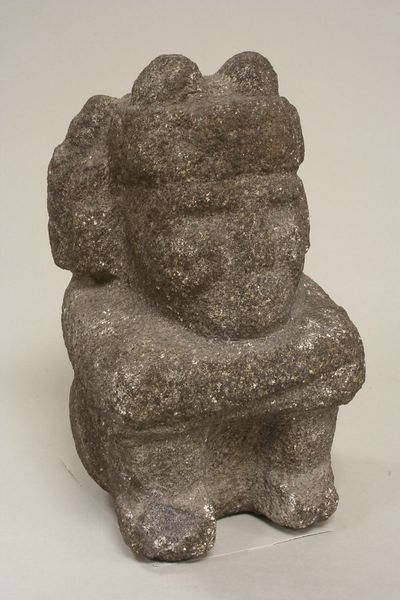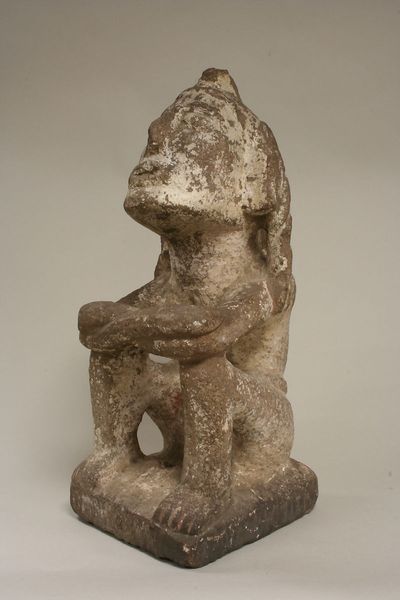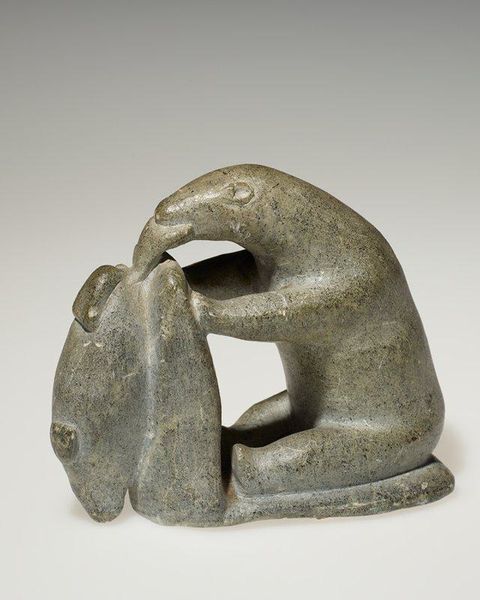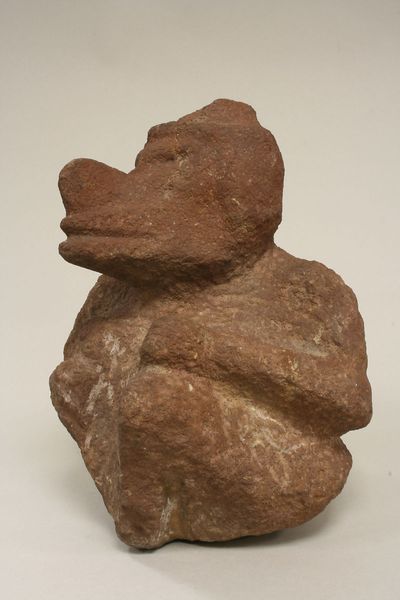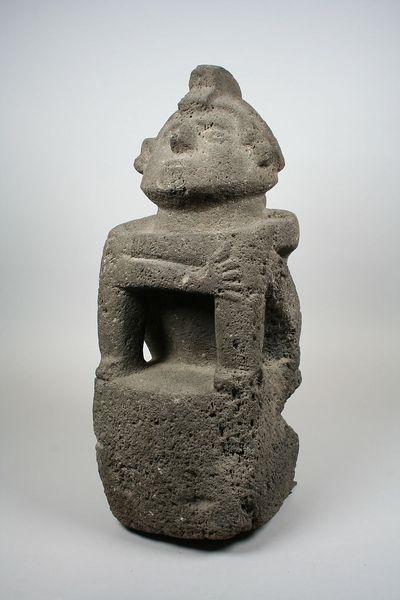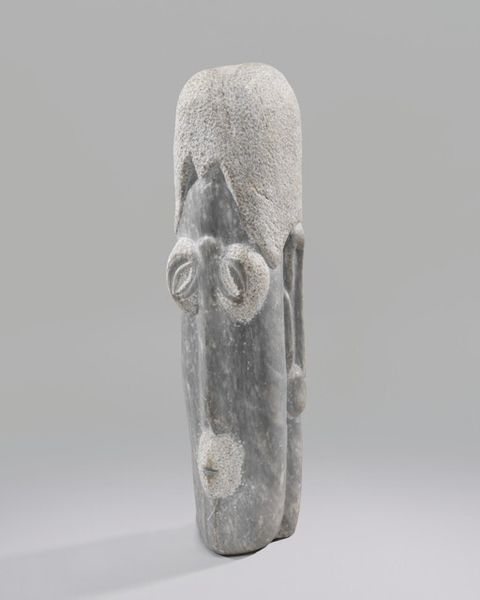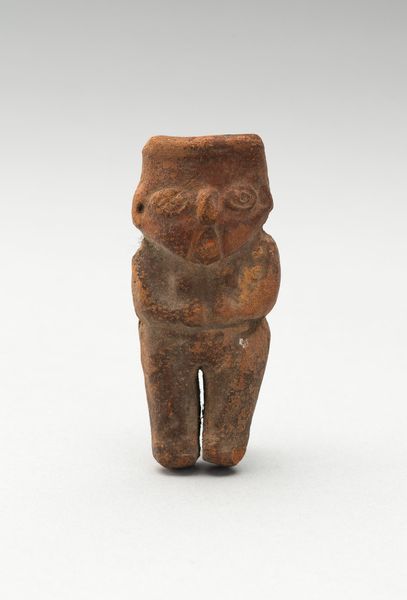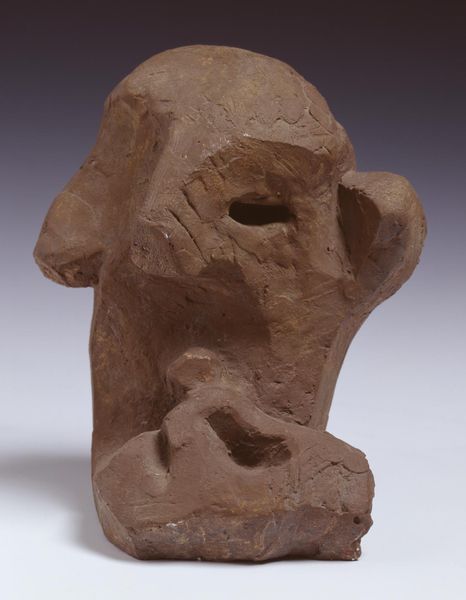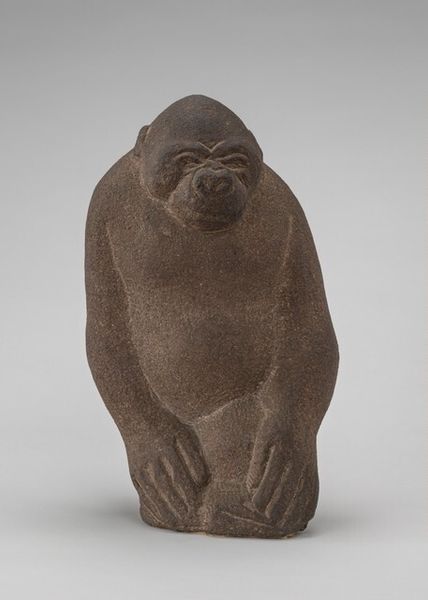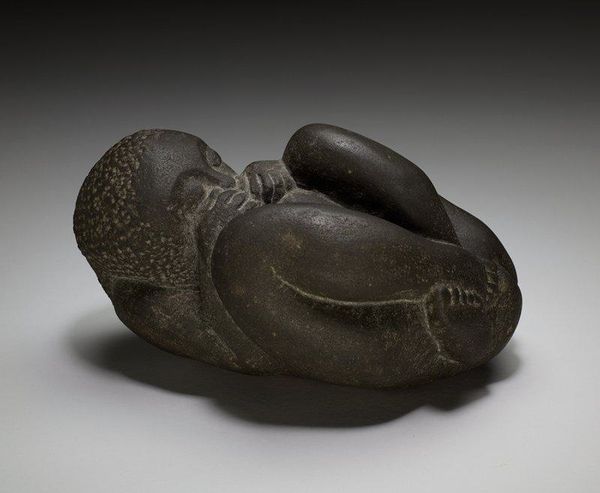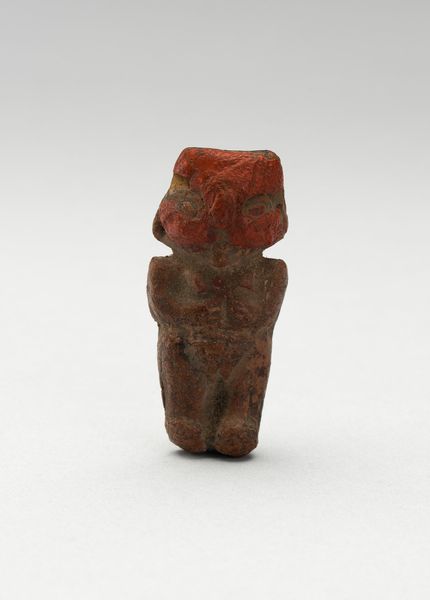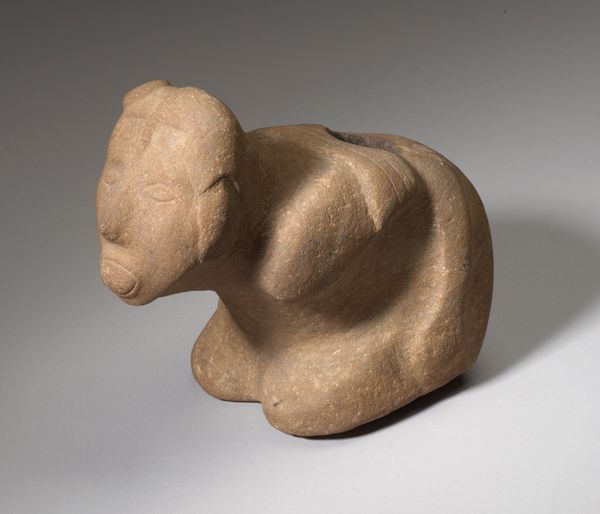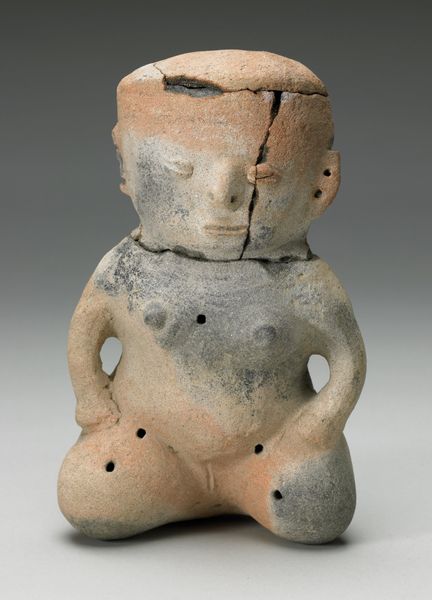
carving, sculpture
#
carving
#
figuration
#
sculpting
#
sculpture
#
indigenous-americas
Dimensions: 4 1/16 × 2 3/4 × 1 1/8 in. (10.32 × 6.99 × 2.86 cm)
Copyright: No Known Copyright
Editor: Here we have "Human Figure," an Inuit sculpture from around 1980, residing here at the Minneapolis Institute of Art. It’s carved, likely from stone, and it's so compact and self-contained, almost fetal in its form. What are your thoughts when you look at this? Curator: The intimacy you describe is powerful, but let's consider this piece within the history of Inuit art and its reception. From the mid-20th century, Inuit sculpture gained recognition outside Indigenous communities largely through government-sponsored initiatives and the art market. How do you think that context affects our understanding? Editor: It makes me wonder, was this made for the art market, or for a different purpose entirely? Curator: Exactly. This "Human Figure," while seemingly personal, exists within a complex web of cultural exchange and economic forces. Were sculptures like these created to represent Inuit culture to the outside world, perhaps even reinforcing certain expectations or stereotypes held by non-Inuit audiences? Editor: So, the piece itself becomes a site of negotiation, between artistic expression, cultural identity, and the expectations of the art world? Curator: Precisely! This sculpture's place in a museum also influences how it's viewed. We tend to see it as a timeless object of artistic merit, separated from its original social context. Do you think seeing it differently, say, in its community of origin, would influence our understanding of it? Editor: Definitely. Its meaning shifts so dramatically when we think about the intent, the audience, and its overall journey. I will remember to question the journey and context as much as the artistic expression. Curator: Indeed. Reflecting on the cultural and economic currents helps us avoid romanticizing it as simply an expression of individual artistic genius; instead, it’s part of a dialogue.
Comments
minneapolisinstituteofart about 2 years ago
⋮
For thousands of years, Inuit people in Alaska and Canada have been carving smooth, sometimes haunting and whimsical sculptures out of bone, walrus ivory, wood, and stone. Inspired by the world around them, artists depict the people, animals and things they encounter in their daily lives and rituals.
Join the conversation
Join millions of artists and users on Artera today and experience the ultimate creative platform.
